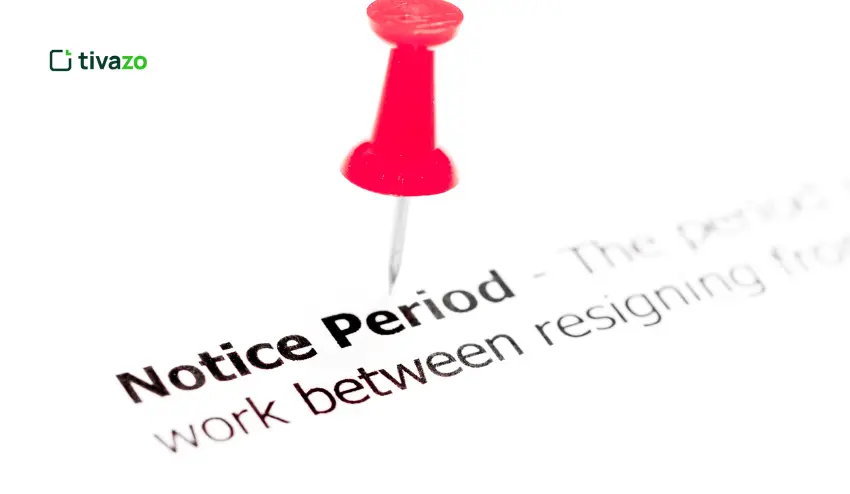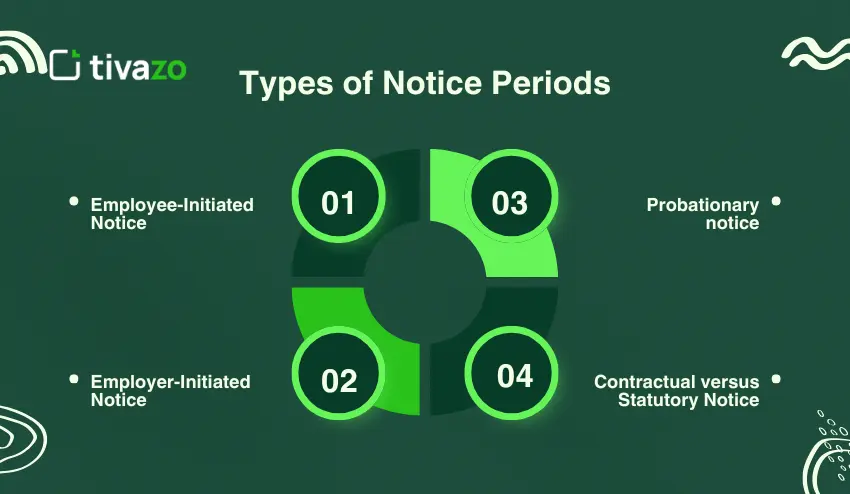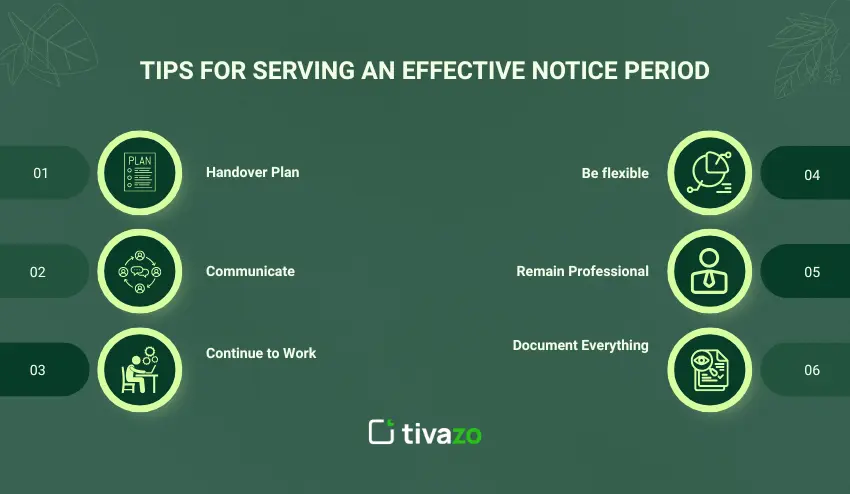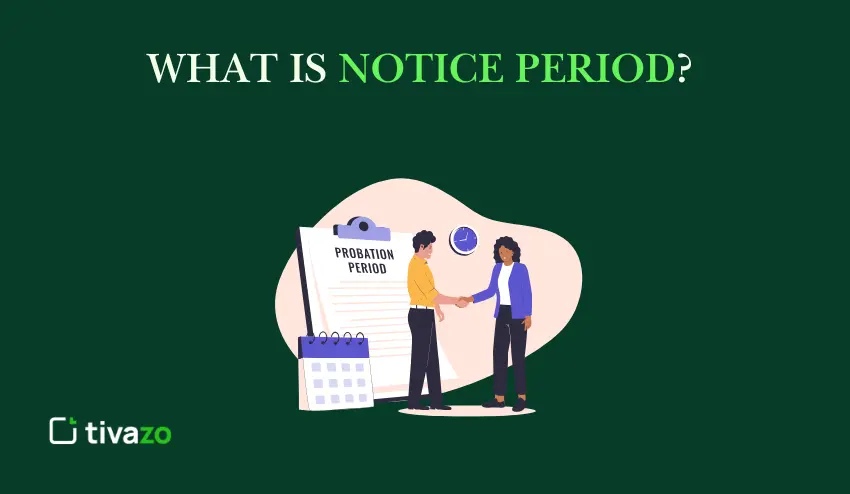Resigning from a position or being terminated from employment is more than simply submitting your letter of resignation. One important aspect for both employees and employers to understand is the notice period. The period of notice is a crucial part of the resignation process that allows for a smooth transition of responsibilities and continuity of work. Without consideration of the notice period rules and policies, you could inadvertently create misunderstandings with your workplace that could lead to problematic professional relationships or even legal cases.
There are several reasons why an employer has a term of notice. To start, for employees, it generally gives the resignation letter many days to weeks’ notice to finish projects, documented processes, and leave on good terms. For employers, it allows the organization time to plan for replacements, re-allocate workloads, and maintain productivity until the separation. By understanding the transition period, both the employee and the employer respect each other’s obligations, plan, and execute a professional exit from work.
In this guide, we will discuss all things about notice periods: what they are, why they exist, what types there are, legal aspects of notice periods, how to calculate the time period, and practical tips for managing the period of notice. Regardless if you are an employee looking to resign or an employer managing an employee separation, this guide will offer you the tools and information you need to deal with the resignation period more confidently.
What Is a Notice Period, and Why Does It Exist?

A notice period is the period of time a worker/employer is obligated to give before termination of the employment relationship. This period operates as an official heads-up and allows time for either party to initiate the transition. Periods of notice are typically defined in a contract or company policy and vary depending on the position, outline, and jurisdiction in which the employee is situated.
The notice period will serve two purposes. From the employee’s standpoint, they will have time to finish existing projects, hand off responsibilities, and leave the organization professionally. From the employer’s standpoint, the employer can plan for the replacement, ensure workflow continuity, and limit workplace disruptions.
Notice periods also assist in wrapping up a termination legally. By serving or abiding by a termination period, employees will not subject themselves to penalties or litigation, and the employer will protect their interests by taking the necessary steps to meet the contract and labor law. In conclusion, a decent organization of a notice period will create a smoother exit process and protect professional relationships.
Types of Notice Periods
The length of notice periods can change, so a good understanding of the types of notice periods can assist employers and employees in handling transitions smoothly, regardless of the setting.

1. Employee-Initiated Notice
This is a term used when an employee decides to resign voluntarily. The length is often described in the employment contract, which allows the employer time to prepare for the exit and for the employee to complete any outstanding work.
2. Employer-Initiated Notice
When an employer terminates an employee’s contract, they are obliged to give notice in writing for a specified amount of time. Notice time needs to allow the employee time to find employment and finish work in relation to any notice of termination.
3. Probationary notice
During a probation period, shorter notice durations will usually apply. In this case, both the employee and employer have a limited time to terminate the employment which doesn’t need to adhere to the regular notice.
4. Contractual versus Statutory Notice
Contractual notice is specified in the employment contract, which again can be longer than what is legally required. On the other side, statutory notice is the least amount of time required by law. The employer and employee cannot deviate from statutory notice unless agreed upon by both parties.
Comparison Table:
| Type | Typical Duration | When It Applies | Key Consideration |
|---|---|---|---|
| Employee-Initiated | 1–3 months | Voluntary resignation | Contract may specify longer duration |
| Employer-Initiated | 1–3 months | Termination by employer | Must meet statutory minimum |
| Probationary | 1–2 weeks | During probation | Shorter due to trial period |
| Statutory | Minimum by law | All employment | Cannot be waived below legal limit |
How Long Is a Notice Period Normally?
The length of notice periods can vary considerably, depending on circumstances, such as the position, duration of employment, and jurisdiction. There are many variations, but most organizations will tend to follow a similar set of standards.
- Entry-Level Positions: One or two weeks on average.
- Mid-Level Positions: Frequently one month.
- Senior/Executive Positions: Usually two to three months but longer if required based on the level of responsibility.
- Probationary Period: One to two weeks usually unless this is stated otherwise in the contract.
Employers can also establish a longer notice period for some positions, especially those with specialized positions and/or require proper handover or transfer of knowledge. Some organizations may also allow shorter notice periods with the employee has a valid reason, which may include (not limited to): conditional employment notice agreed to by employee; employee discretion; notice received from previous employer.
Advice – Always review your contract for your own specific obligations for length of notice, as well as local labor laws.
Is It Possible to Leave Before the End of a Notice Period?
Leaving a job before the written notice is typically discouraged, but sometimes it may be justified. Leaving even before the notice period has ended can sometimes have legal or financial implications, such as loss of pay, benefits, or a penalty in accordance with the agreement.
Situations You May Consider Leaving Early:
- Mutual Agreement: Your employer agrees to your leaving early, either without compensation or more commonly as part of an agreement documenting your release from employment.
- Significant Personal Circumstances: Employees might be able to negotiate a leave if family emergencies arise or the job is moving.
- Employer Contract Violation: If the Employer has breached the contract, the employee may be legally able to leave (or terminate) employment before the notice period.
Best Practice: In all scenarios, it is best to be transparent and request to leave early, and if that agreement is reached, document it. When you are transparent and request to leave your job early in writing, you protect legal rights but also engage in a respectful manner to exit.
Is it possible to Deny or Waive a Notice Period by Employers?
An employee is usually not allowed to be denied the right to serve a notice period as long as it has been stipulated in the contract or as required by law. They may, however, waive a portion or the entire notice period under some conditions.
Cases where the Employers are at Liberty to Waive a Notice Period:
- Mutual Agreement: Both parties agree to terminate employment before the contract.
- Immediate Replacement Required: The employer can provide a shorter period when the position can be filled as soon as possible.
- Buyout Option: In certain organizations, compensation may be given instead of the employee being given a notice and the employee is paid the entire period without being required to work.
Important to note: It is always advisable that waiving or reduction of a notice period be put in writing to prevent any conflicts and to make it clear to both parties.
How to Calculate Your Notice Period
How long the notice period is will depend on your employment contract and local employment law. In most cases, this is the time that starts on the day the employee gives the notice of resignation, to the end of the employee’s contract, including weekends and public holidays (if your notice explicitly mentions this as an agreed part of the notice period).
Three Steps to Calculate:
- Refer to Your Employment Contract: If there are no statute restrictions or requirements in your contract, you should reference your contract for any sections detailing how long your notice will be.
- Check Statutory Requirements: You should make sure your notice is not less than the minimum legal requirement.
- Include leave, suspensions, and early release (any pending approvals): Your notice should include any scheduled leave days, pending suspensions for known reasons, or any released days agreed upon by the employer.
- Validate with HR: This ensures that there is a clear understanding going forward.
Example: If your contract recommends a one-month notice period and you gave notice on the 1st of October, your last day of work will usually be October 31st, unless you come to an agreement prior to your employer.
By getting the notice time period correct, the employee can make sure they are following local law, and the time period will assist in planning for a successful transition for the employee and the employer’s organization.
Employee Rights and Obligations of Employers during Notice Period
The employees and employers also have their duties to perform during the notice period to ensure a professional transition. Knowledge of such rights and obligations prevents conflicts as well as ensures trust and healthy relationships between the outgoing employee and the organization.
Employee Rights:
- Full Pay and Benefits: This usually means that employees have the right to receive their standard salary, bonuses, and benefits up to their final day of work, even when they are not performing all the work they would have done. This guarantees monetary stability and equality.
- Accrued Leave: Accrued leave is used by many companies in the course of the notice period. By way of example, in case you have some vacation days that you have not used yet, you could be able to take some part of your notice period in the form of paid leave, as long as the company agrees to that.
- Safe and Respectful Treatment: The employees must not be harassed, demoted, or treated unfairly throughout their notice period. They also have the privilege to work in a professional and respectful environment, which facilitates a smooth exit.
- Opportunity to Handover: The workers may look forward to the time and resources to accomplish handovers and paperwork. This makes their work to be transitioned on the colleagues or new employees appropriately.
Employer Obligations:
- Ease Knowledge Transfer: The employers are supposed to offer direction and resources to the employees to transfer responsibilities. This can involve meetings with substitute employees or the availability of documentation templates.
- Observance of Contract and Law: Employers should respect the time of notice stipulated in the employment agreement and adhere to the legal provisions. Reduction or prolongation of the time of notice must always be agreed and written.
- Effective Communication: Employers ought to express expectations well in terms of what is left to be done, reporting relationships, and how to leave the company. Open communication will minimize confusion and will assist in keeping the morale of the team members up during the transition.
Employees and employers can have a good working experience by observing these rights and obligations. Leaving employees do so in good spirit, and the employers have the knowledge and continuity, and hence less disruption is caused to the operations. It is also a strategy that builds the reputation of the organization, which is more appealing to the upcoming talent.
Tips for Serving an Effective Notice Period
It is important to serve your notice period productively if you want to remain professional and to leave the company on good terms. What you do in this time could affect your references, your reputation, and your team’s workflow.

1. Handover Plan
Make conscious efforts to document your work for others to continue after your leave. You could document the status of outstanding projects, valuable contacts, instructions for use, or next steps. A good handover will allow others to pick up where you left off without disruption.
2. Communicate
Inform your manager and your team of the progress of your work and the status of your handover. If there are key items that need to be done before you go, be sure that everyone is aware of these items and the expectations. Good communication will keep everyone on the same page leading up to your departure.
3. Continue to Work
The fact that you are exiting the organization does not mean you don’t have a connection to your role anymore. We’d encourage you to continue to do your job effectively, working on projects and deliverables as much as you are able to up until you leave. This reflects a professional attitude and commitment to your team.
4. Be flexible
This encompasses being flexible to support training your successor, answering questions or just being available for any transition activities, including meetings for instance. Inasmuch as you are open to this idea, it would be well received by your co-workers.
5. Remain Professional:
Avoid gossip or disparaging discussion about the organization, coworkers, or supervisors. It is recommended to exit on good terms with an organization for the sake of relationships and references in the future.
6. Document Everything,
Keep records of emails, approvals, and project updates. This safeguards you and keeps the new employee or supervisor from missing any part of your work.
Ensuring your exit is smooth, professional, and leaves a positive impression is in the interest of all parties involved: everyone in the company and you.
Advice for Handling a Notice Period like a Boss
Handling a notice period like a boss involves some planning, communications, and the ability to focus on a clean exit. The way you handle this period could play a major role in your next opportunity, as well as your relationship with colleagues, peers, and managers after you leave.
1. Establish Goals
Determine what you need to finalize before leaving. Prioritize what is important for ongoing work, ensure tasks are completed or passed on appropriately.
2. Communicate Frequently
Despite being on exit plans, keep your manager and team updated. Communication throughout your notice period prevents miscommunication and prepares the team for your exit. Regular updates or touch-points during your notice period will keep everyone informed while you also look after things to make a proper transition to your absence.
3. Document Processes
Treat writing your documentation like a comprehensive process document, with recorded log-in information, relevant people, and step-by-step instructions. Documentation provides a way for continuity and less dependence on you after you leave.
4. Mentor Your Successor:
If a successor is already in place, begin mentoring them by answering questions, providing colleagues with background information to ensure they feel comfortable and can be successful.
5. Avoid Last-Minute Work:
Complete major projects before your last day, if possible. Likewise, do not leave unfinished work or a growing pile of work for your colleagues to pick up later – it’s bad for stress, and it’s bad for your reputation in the professional realm.
6. Continue Professional Behavior:
Continue to show commitment and a positive attitude. Professionalism requires avoiding negative comments, office gossip, or any behavior that may be interpreted as unprofessional, especially if the behavior could hamper references or impact your next position.
7. Ask for Feedback:
Asking for feedback before you leave is another excellent opportunity for professional growth, in addition to leaving the impression that you are committed to improving yourself, as well as your colleagues and the team.
Conclusion
A notice period is useful in facilitating a seamless transition for employees and employers alike. It provides sufficient time to transition responsibilities, train successors, and support the business through this transition with minimal disruption. Resigning with professional respect and gratitude provides employees with a graceful exit and will also help to shape their ongoing career and reputation.
Comprehending how a notice period applies will help inform your decisions when resigning or in the hiring process. Each facet, from knowing your rights and obligations to formally communicating your decision, involves a structured and managed process to exit, while establishing a respectful transition.
Whether you are working through a notice period for an employee or have an employee working through their notice period on a team, the key is clear communication, planning, and respect. A notice period should be about much more than the terms of the contract; it is an assurance of your integrity and professionalism in your exit, and it can set a helpful tone for other transitions starting at that same time.




